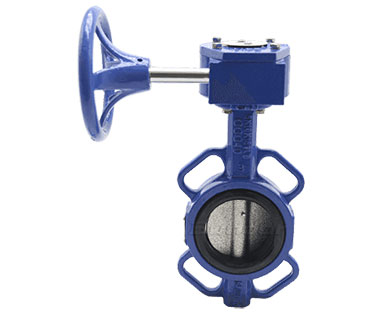Butterfly valve selection, procurement should pay attention!
Butterfly valve design selection

For civil HVAC systems, the following points should be noted when designing the butterfly valve:
1. The tradeoff between the butterfly valve and the turbine butterfly valve: According to engineering experience, the handle butterfly valve is recommended when the pipe diameter is less than DN100mm. If the large diameter is selected, the handle butterfly valve is used. Due to the rust and insufficient operation space, the handle will not move when the switch is used. When the diameter is greater than or equal to DN100mm, the worm gear type butterfly valve is recommended. The handle butterfly valve is cheaper than the turbo butterfly valve and should be considered comprehensively in the selection process.
2, the flange butterfly valve and the opposite butterfly valve trade-off: According to engineering experience, under the premise of ensuring the installation quality, the pipe diameter is less than or equal to DN300, the pressure is less than 1.6MPa. It is recommended to use the butterfly valve, the price is cheap. Flange butterfly valves are recommended for pipe diameters greater than DN300. Of course, larger than DN300, the pressure is less than 1.6MPa can also use the wafer type butterfly valve, but need to fully consider the installation level and system pressure to prevent leakage.
3. Trade-offs between hard-seal butterfly valves and soft-seal butterfly valves: Both sides of the seal pair are made of metal or harder than other materials called "hard seals". The seal performance of this seal is poor, it is difficult to achieve "zero leakage", but high temperature resistance, wear resistance, good mechanical properties, high price; the side of the seal pair is made of metal material, the other side is elastic non- Metal materials are called "soft seals." The seal has good sealing performance, but is not resistant to high temperature, is easy to wear, has poor mechanical properties, and is inexpensive. HVAC systems are recommended to use soft seals at low prices; hard seals are generally used in chemical, high temperature, high pressure special applications.
Butterfly valve procurement points
1. When inquiring, it is necessary to clarify the material of each part of the valve to avoid the price difference caused by different materials, which affects the fairness of procurement. The main components of the butterfly valve are the valve body, the valve body seal (valve seat), the valve plate, the valve stem, the stem bearing, and the stem seal.
2. Common materials for valve body: Nominal pressure is less than or equal to PN10. Gray cast iron material HT200 can be used. The nominal pressure is greater than PN10. Gray cast iron material should not be used. Ductile iron, carbon steel castings and stainless steel castings can be used.
3, valve body sealing ring commonly used material EPDM rubber or butyl cyanide rubber (good oil resistance).
4, valve stem commonly used material 45 steel chrome or stainless steel (2Cr13), it is recommended to use stainless steel.
5, valve plate commonly used material ductile iron chrome or stainless steel (304), it is recommended to use stainless steel material, after long-term operation of air conditioning water system, rust will accumulate at the valve plate, affecting the switch and seal.
The price difference of valves of different materials is large. When purchasing, the material should be determined according to the pressure, operation management level and importance of the valve. Determine the standard to be targeted, after the material standard is unified, you can easily compare prices, bargaining, and finally buy a cost-effective product.
 简体中文
简体中文 Русский
Русский Español
Español Bundor - Butterfly, Gate, Check, Ball, Globe Valve Manufacturer, Supplier & Distributor
Bundor - Butterfly, Gate, Check, Ball, Globe Valve Manufacturer, Supplier & Distributor
